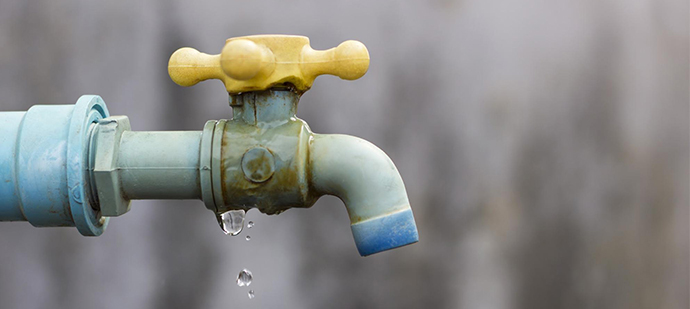Exactly how to Examine If Your Home Has a Concealed Leakage
Exactly how to Examine If Your Home Has a Concealed Leakage
Blog Article
Just how do you actually feel about Leaking water lines?

Early discovery of leaking water lines can minimize a possible calamity. Some little water leaks might not be visible.
1. Take A Look At the Water Meter
Every house has a water meter. Examining it is a guaranteed manner in which aids you uncover leaks. For beginners, shut off all the water resources. Ensure no one will flush, use the faucet, shower, run the washing machine or dishwasher. From there, go to the meter and watch if it will certainly change. Given that no person is utilizing it, there need to be no activities. If it relocates, that indicates a fast-moving leak. Similarly, if you detect no changes, wait a hr or two as well as check back once more. This indicates you may have a sluggish leakage that could even be underground.
2. Check Water Intake
Examine your water costs and track your water intake. As the one paying it, you must discover if there are any type of disparities. If you identify sudden changes, in spite of your intake being the same, it suggests that you have leakages in your plumbing system. Remember, your water bill should fall under the very same range on a monthly basis. A sudden spike in your expense shows a fast-moving leak.
A consistent increase every month, also with the same behaviors, shows you have a slow leak that's additionally slowly intensifying. Call a plumber to thoroughly examine your home, especially if you feel a warm area on your floor with piping beneath.
3. Do a Food Coloring Examination
30% comes from bathrooms when it comes to water consumption. Test to see if they are running effectively. Decline flecks of food shade in the tank and wait 10 minutes. There's a leakage between the container and dish if the shade in some way infiltrates your bowl throughout that time without flushing.
4. Asses Outside Lines
Don't fail to remember to check your outdoor water lines as well. Test spigots by attaching a garden tube. Ought to water leak out of the connection, you have a loosened rubber gasket. Change this and also make certain all links are limited. If you've got a lawn sprinkler, it will assist get it expertly examined as well as kept annually. One small leak can squander tons of water as well as spike your water bill.
5. Inspect as well as Examine the Circumstance
House owners must make it a habit to check under the sink counters and even inside cupboards for any bad odor or mold and mildew development. These 2 warnings suggest a leak so prompt attention is required. Doing regular evaluations, also bi-annually, can conserve you from a major issue.
More notably, if you know your residence is already old, keep a watchful eye on your heaters, pipes, pipes and so on. Look for stainings and also damaging as many pipes and also appliances have a life span. They will also normally degrade because of tear as well as wear. If you believe leaking water lines in your plumbing system, do not wait on it to rise. Call an expert plumber right now so you don't wind up with an awful mess in your house.
Early detection of dripping water lines can reduce a potential calamity. Some tiny water leaks may not be noticeable. Checking it is a proven way that aids you uncover leaks. One tiny leakage can waste lots of water as well as surge your water bill.
If you think leaking water lines in your plumbing system, don't wait for it to escalate.
WARNING SIGNS OF WATER LEAKAGE BEHIND THE WALL
PERSISTENT MUSTY ODORS
As water slowly drips from a leaky pipe inside the wall, flooring and sheetrock stay damp and develop an odor similar to wet cardboard. It generates a musty smell that can help you find hidden leaks.
MOLD IN UNUSUAL AREAS
Mold usually grows in wet areas like kitchens, baths and laundry rooms. If you spot the stuff on walls or baseboards in other rooms of the house, it’s a good indicator of undetected water leaks.
STAINS THAT GROW
When mold thrives around a leaky pipe, it sometimes takes hold on the inside surface of the affected wall. A growing stain on otherwise clean sheetrock is often your sign of a hidden plumbing problem.
PEELING OR BUBBLING WALLPAPER / PAINT
This clue is easy to miss in rooms that don’t get much use. When you see wallpaper separating along seams or paint bubbling or flaking off the wall, blame sheetrock that stays wet because of an undetected leak.
BUCKLED CEILINGS AND STAINED FLOORS
If ceilings or floors in bathrooms, kitchens or laundry areas develop structural problems, don’t rule out constant damp inside the walls. Wet sheetrock can affect adjacent framing, flooring and ceilings.
https://www.servicemasterbyzaba.com/blog/how-to-detect-water-leakage-in-walls/

As a keen person who reads on Finding hidden leaks, I figured sharing that piece of content was sensible. Sharing is good. One never knows, you might be doing someone a favor. I value reading our article about Top leak detection hacks.
Report this page